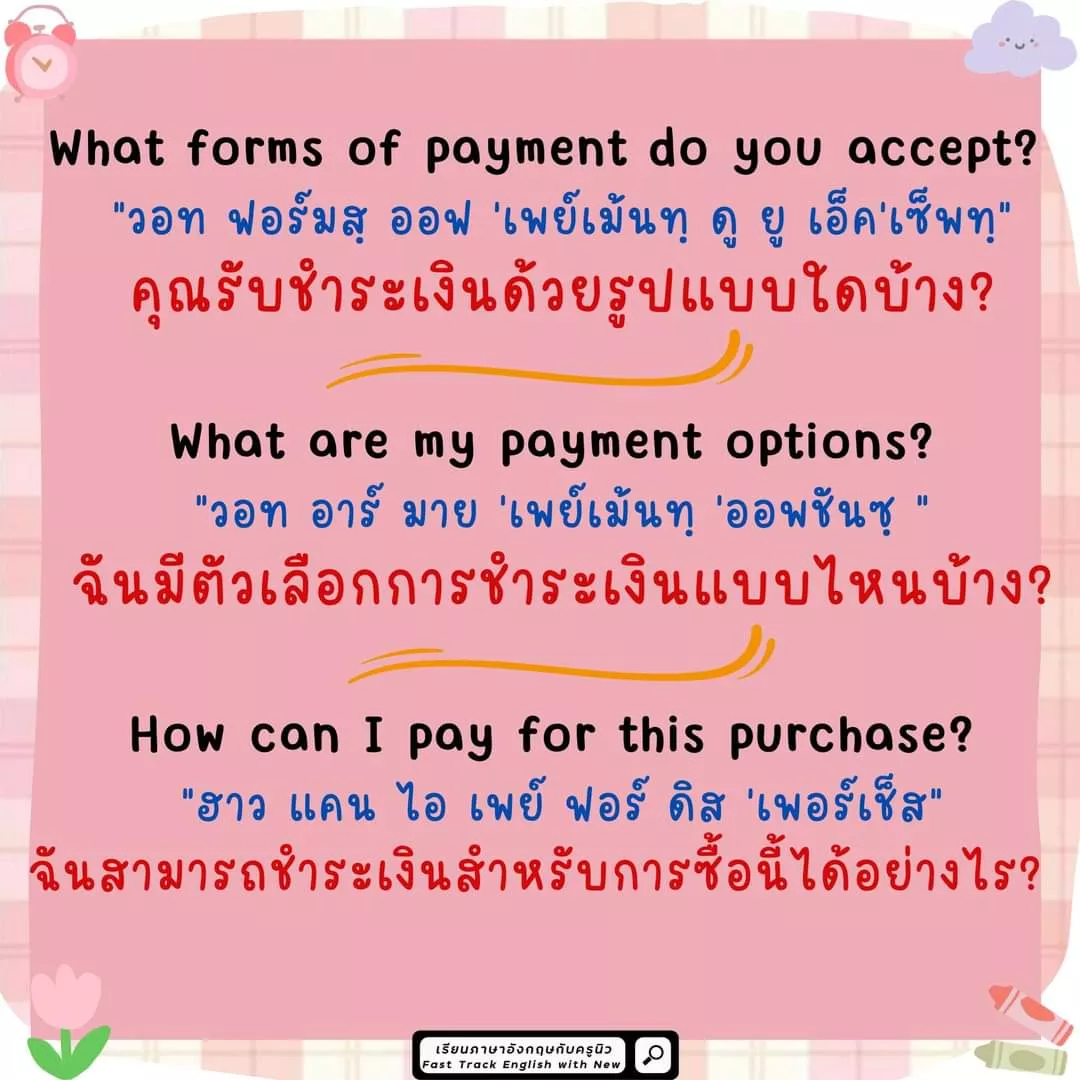เงินเหลือ ภาษาอังกฤษ: คำแนะนำในการบันทึกบัญชีและการเพิ่มมูลค่าให้กับเงินของคุณ
NỘI DUNG TÓM TẮT
- 1 ประโยคและสำนวนภาษาอังกฤษ | เกี่ยวกับ | เงิน | Money | @59Abcs
- 2 เงินเหลือ ภาษาอังกฤษ: A Comprehensive Guide to Understanding and Managing Your Finances
- 3 ความหมายของเงินเหลือ
- 4 การใช้คำศัพท์ที่เกี่ยวข้อง
- 5 วิธีการใช้เงินเหลือในชีวิตประจำวัน
- 6 การบันทึกและติดตามเงินเหลือ
- 7 การวางแผนการใช้เงินเหลือ
- 8 การลดหย่อนภาษีที่เกี่ยวข้องกับเงินเหลือ
- 9 ความสัมพันธ์ระหว่างเงินเหลือและการลงทุน
- 10 เทคนิคการออมเงินเหลือ
- 11 คำแนะนำในการจัดการเงินเหลือในสถานการณ์ฉุกเฉิน
- 12 วิธีปรับปรุงสถานการณ์เงินเหลือในระยะยาว
- 13 FAQs (คำถามที่พบบ่อย)
- 13.1 Q1: ยอดที่เหลือ ภาษาอังกฤษ หมายถึงอะไร?
- 13.2 Q2: ฉันเหลือเงิน ภาษาอังกฤษ คืออะไร?
- 13.3 Q3: ส่วนที่เหลือ ภาษาอังกฤษ pantip คืออะไร?
- 13.4 Q4: ยอดคงเหลือสุทธิ ภาษาอังกฤษ หมายถึงอะไร?
- 13.5 Q5: มีเงินเหลือ ภาษาอังกฤษ คืออะไร?
- 13.6 Q6: ยอดคงเหลือทั้งหมด ภาษาอังกฤษ หมายถึง?
- 13.7 Q7: เงินเหลือเท่าไหร่ ภาษาอังกฤษ หมายถึง?
- 13.8 Q8: ยอดคงเหลือ ภาษาอังกฤษ ตัวย่อคือ?
- 14 สรุป
- 15 ยอดที่เหลือ ภาษาอังกฤษ
- 16 ฉันเหลือเงิน ภาษาอังกฤษ
- 17 ส่วนที่เหลือ ภาษาอังกฤษ Pantip
- 18 ส่วนที่เหลือ ภาษาอังกฤษ pantip: A Comprehensive Guide
- 19 Understanding ส่วนที่เหลือ in English Language Learning
- 20 Strategies for Tackling ส่วนที่เหลือ
- 21 Frequently Asked Questions (FAQs)
- 22 Footnotes
ประโยคและสำนวนภาษาอังกฤษ | เกี่ยวกับ | เงิน | Money | @59Abcs
Keywords searched by users: เงินเหลือ ภาษาอังกฤษ ยอดที่เหลือ ภาษาอังกฤษ, ฉันเหลือเงิน ภาษาอังกฤษ, ส่วนที่เหลือ ภาษาอังกฤษ pantip, ยอดคงเหลือสุทธิ ภาษาอังกฤษ, มีเงินเหลือ ภาษาอังกฤษ, ยอดคงเหลือทั้งหมด ภาษาอังกฤษ, เงินเหลือเท่าไหร่ ภาษาอังกฤษ, ยอดคงเหลือ ภาษาอังกฤษ ตัวย่อ
เงินเหลือ ภาษาอังกฤษ: A Comprehensive Guide to Understanding and Managing Your Finances
In today’s fast-paced world, financial literacy is a crucial skill that everyone should possess. Understanding the concept of “เงินเหลือ” (remaining balance) in Thai is vital for effective money management. This article aims to provide an in-depth guide to เงินเหลือ ภาษาอังกฤษ, covering its meaning, related terminology, daily life applications, tracking and recording techniques, tax deductions, the relationship between remaining balance and investments, saving techniques, emergency financial management, and long-term financial improvement.
ความหมายของเงินเหลือ
เงินเหลือ, translated as “remaining balance” in English, refers to the amount of money left after deducting expenses or withdrawals from the initial sum. It is a fundamental financial term that plays a crucial role in budgeting and financial planning.
Understanding your remaining balance is essential for maintaining financial stability and achieving financial goals. It allows individuals to make informed decisions regarding spending, saving, and investing.
การใช้คำศัพท์ที่เกี่ยวข้อง
To comprehend the concept of เงินเหลือ ภาษาอังกฤษ fully, it’s important to be familiar with related terminology. Here are some key terms:
-
ยอดที่เหลือ ภาษาอังกฤษ (Remaining Balance in English): This term specifically refers to the remaining amount in the context of English language usage.
-
ฉันเหลือเงิน ภาษาอังกฤษ (I have remaining money in English): Indicates that an individual still has money left.
-
ส่วนที่เหลือ ภาษาอังกฤษ pantip (Remaining Portion in English Pantip): “Pantip” refers to a popular Thai online community. This term might be used in discussions on the remaining portion of money on the Pantip platform.
-
ยอดคงเหลือสุทธิ ภาษาอังกฤษ (Net Remaining Balance in English): This term represents the final remaining balance after considering all deductions and transactions.
-
มีเงินเหลือ ภาษาอังกฤษ (There is remaining money in English): Indicates the presence of money that hasn’t been spent or utilized.
-
ยอดคงเหลือทั้งหมด ภาษาอังกฤษ (Total Remaining Balance in English): Refers to the overall remaining balance without excluding any factors.
-
เงินเหลือเท่าไหร่ ภาษาอังกฤษ (How much remaining money in English): This question seeks information about the specific amount of money that is still available.
-
ยอดคงเหลือ ภาษาอังกฤษ ตัวย่อ (Remaining Balance in English Abbreviation): This term might be used when referring to the remaining balance in a shortened form.
วิธีการใช้เงินเหลือในชีวิตประจำวัน
Now that we have a foundational understanding of เงินเหลือ, let’s explore how this concept is applied in daily life.
Budgeting and Expense Management
One of the primary uses of remaining balance is in budgeting. By keeping track of income and expenses, individuals can determine how much money is available for discretionary spending, savings, and investments.
Steps for Effective Budgeting:
-
Income Assessment: Identify all sources of income, including salaries, bonuses, and any other additional earnings.
-
Expense Categorization: Classify expenses into fixed (e.g., rent, utilities) and variable (e.g., dining out, entertainment) categories.
-
Setting Priorities: Allocate funds based on priorities. Essential expenses should be covered first, followed by savings and discretionary spending.
-
Regular Monitoring: Regularly review and adjust the budget as circumstances change. This ensures that financial goals are aligned with the remaining balance.
Tracking and Recording Techniques
Keeping an accurate record of transactions is crucial for managing the remaining balance effectively. Here are some techniques to achieve this:
-
Use Financial Apps: Leverage mobile applications that automatically track expenses and categorize transactions.
-
Maintain a Financial Journal: For those who prefer a manual approach, keeping a journal to record daily expenses can provide a tangible overview of spending habits.
-
Set Alerts: Many banking apps allow users to set up alerts for transactions, low balances, or when certain thresholds are reached.
-
Regularly Reconcile Accounts: Periodically reconcile bank statements with personal records to identify any discrepancies and ensure accuracy.
การบันทึกและติดตามเงินเหลือ
Recording and tracking remaining balances go hand in hand with effective budgeting. Whether using digital tools or traditional methods, the goal is to maintain a clear and up-to-date picture of financial standing.
Digital Tools for Recording:
-
Mobile Banking Apps: Most banks offer mobile apps that allow users to monitor transactions, check balances, and set up budgeting tools.
-
Expense Tracking Apps: Dedicated apps such as Mint or YNAB (You Need A Budget) provide comprehensive features for expense tracking and budget management.
-
Spreadsheet Software: Creating a personalized spreadsheet in software like Microsoft Excel or Google Sheets enables users to customize categories and track expenses over time.
Traditional Methods for Recording:
-
Financial Diary: A physical diary or notebook can be used to manually jot down daily expenses. This method provides a tangible record and can be helpful for those who prefer a non-digital approach.
-
Envelopes System: Allocate cash into different envelopes for specific categories (e.g., groceries, entertainment). Once an envelope is empty, spending in that category stops until the next budget cycle.
การวางแผนการใช้เงินเหลือ
Planning how to use the remaining balance is essential for achieving financial goals and avoiding unnecessary financial stress. Here are steps to effectively plan the use of remaining balance:
Goal Setting:
-
Short-Term Goals: Identify immediate financial priorities, such as paying off outstanding bills or building an emergency fund.
-
Medium-Term Goals: Plan for goals that can be achieved within a few years, such as saving for a vacation or a down payment on a home.
-
Long-Term Goals: Consider long-term objectives like retirement savings, investments, and building wealth over time.
Emergency Fund:
-
Establish an Emergency Fund: Allocate a portion of the remaining balance to an emergency fund. This fund serves as a financial safety net in case of unexpected expenses or loss of income.
-
Determine the Ideal Emergency Fund Size: Financial experts often recommend having three to six months’ worth of living expenses in an emergency fund.
Investments:
-
Explore Investment Options: Consider investment opportunities to grow wealth over time. This could include stocks, bonds, mutual funds, or real estate.
-
Diversify Investments: Spread investments across different asset classes to minimize risk. Consult with a financial advisor for personalized investment advice.
Debt Repayment:
-
Prioritize Debt Repayment: If there are outstanding debts, allocate a portion of the remaining balance to repay them. Focus on high-interest debts first.
-
Create a Debt Repayment Plan: Develop a structured plan to pay off debts systematically. This could involve the snowball method (paying off small debts first) or the avalanche method (tackling high-interest debts first).
การลดหย่อนภาษีที่เกี่ยวข้องกับเงินเหลือ
Understanding the tax implications of remaining balance is crucial for optimizing financial decisions. Certain expenses and investments may be eligible for tax deductions, reducing the overall tax burden.
Tax-Deductible Expenses:
-
Charitable Contributions: Donations to eligible charitable organizations may be tax-deductible. Keep records of donations for tax filing purposes.
-
Retirement Contributions: Contributions to retirement accounts, such as a 401(k) or IRA, may be tax-deductible. Take advantage of these opportunities to save for the future while reducing taxable income.
-
Educational Expenses: Tuition fees, student loan interest, and other qualified educational expenses may be eligible for tax deductions.
-
Homeownership Deductions: Homeowners may be eligible for deductions on mortgage interest, property taxes, and certain home improvements.
Consult with a Tax Professional:
-
Individualized Advice: Tax laws can be complex and vary based on individual circumstances. Consult with a tax professional to receive personalized advice on optimizing tax deductions.
-
Stay Informed: Stay updated on changes in tax laws that may impact deductions related to the remaining balance. Tax professionals can provide guidance on any new regulations.
ความสัมพันธ์ระหว่างเงินเหลือและการลงทุน
The relationship between remaining balance and investments is significant in achieving financial growth over time. By strategically investing a portion of the remaining balance, individuals can build wealth and secure their financial future.
Investment Opportunities:
-
Stock Market: Investing in stocks provides an opportunity for capital appreciation. Consider a diversified portfolio to spread risk.
-
Bonds: Bonds offer a more conservative investment option, providing regular interest payments and return of principal at maturity.
-
Real Estate: Real estate investments, such as rental properties, can generate passive income and potential appreciation.
-
Mutual Funds: Mutual funds pool money from multiple investors to invest in a diversified portfolio of stocks, bonds, or other securities.
Risk Tolerance:
-
Assess Risk Tolerance: Understand personal risk tolerance before making investment decisions. Risk tolerance varies among individuals and is influenced by factors such as age, financial goals, and time horizon.
-
Diversification: Diversifying investments across different asset classes helps mitigate risk. Avoid putting all funds into a single investment type.
Professional Advice:
-
Consult a Financial Advisor: Seek guidance from a financial advisor to create an investment strategy aligned with financial goals.
-
Regular Portfolio Review: Periodically review and adjust investment portfolios based on changing market conditions, financial goals, and risk tolerance.
เทคนิคการออมเงินเหลือ
Saving money is a fundamental aspect of financial well-being. Adopting effective saving techniques ensures that a portion of the remaining balance is preserved for future needs and goals.
Establishing a Savings Plan:
-
Set Saving Goals: Define specific savings goals, such as creating an emergency fund, saving for a vacation, or building a down payment for a home.
-
Automate Savings: Set up automatic transfers from checking to savings accounts to ensure consistent savings.
-
Emergency Fund Priority: Prioritize building an emergency fund to cover unexpected expenses without relying on credit.
Cutting Unnecessary Expenses:
-
Identify Non-Essential Spending: Review expenses to identify areas where costs can be reduced without compromising essential needs.
-
Avoid Impulse Purchases: Before making non-essential purchases, consider whether the item is a true necessity or an impulse buy.
Take Advantage of Discounts and Rewards:
-
Use Cashback Programs: Many credit cards offer cashback rewards on eligible purchases. Take advantage of these programs to earn money back on spending.
-
Utilize Coupons and Discounts: Look for discounts, coupons, and promotional offers when making purchases to save money.
คำแนะนำในการจัดการเงินเหลือในสถานการณ์ฉุกเฉิน
Unforeseen circumstances can arise, making it crucial to have a plan for managing the remaining balance during emergencies.
Emergency Financial Management:
-
Prioritize Basic Needs: In times of crisis, prioritize spending on essential needs such as food, shelter, and healthcare.
-
Utilize Emergency Fund: If possible, use funds from the emergency fund to cover immediate expenses.
-
Contact Creditors: In cases of financial hardship, communicate with creditors to discuss temporary solutions, such as deferred payments or reduced interest rates.
Insurance Coverage:
-
Review Insurance Policies: Ensure that insurance coverage, such as health, property, and life insurance, is adequate to provide financial protection during emergencies.
-
Emergency Savings: Maintain a separate emergency savings fund to cover unexpected medical expenses or other emergencies not covered by insurance.
วิธีปรับปรุงสถานการณ์เงินเหลือในระยะยาว
Improving the overall financial situation in the long term requires strategic planning and consistent efforts. Here are steps to enhance the long-term financial standing:
Continuous Learning:
-
Stay Informed: Keep up with financial news, investment trends, and changes in economic conditions to make informed decisions.
-
Financial Education: Invest time in learning about personal finance, investment strategies, and money management. Numerous online resources, books, and courses are available.
Regular Financial Check-ups:
-
Review Financial Goals: Periodically review and adjust financial goals based on changes in personal circumstances, economic conditions, and priorities.
-
Monitor Investments: Keep a close eye on investment portfolios and make adjustments as needed to align with financial objectives.
Debt Reduction Strategies:
-
Consolidate Debts: Consider debt consolidation to simplify payments and potentially reduce interest rates.
-
Accelerate Debt Payments: Allocate additional funds to paying off debts faster, especially high-interest debts.
Retirement Planning:
-
Regularly Contribute to Retirement Accounts: Continuously contribute to retirement accounts to ensure a secure financial future.
-
Reassess Retirement Goals: As retirement approaches, reassess retirement goals and adjust contributions accordingly.
FAQs (คำถามที่พบบ่อย)
Q1: ยอดที่เหลือ ภาษาอังกฤษ หมายถึงอะไร?
A1: ในภาษาอังกฤษ, “ยอดที่เหลือ” หมายถึง จำนวนเงินที่เหลืออยู่หลังจากหักค่าใช้จ่ายหรือการถอนเงินออกจากจำนวนเริ่มต้น
Q2: ฉันเหลือเงิน ภาษาอังกฤษ คืออะไร?
A2: ประโยค “ฉันเหลือเงิน ภาษาอังกฤษ” หมายถึง ฉันยังมีจำนวนเงินที่เหลืออยู่
Q3: ส่วนที่เหลือ ภาษาอังกฤษ pantip คืออะไร?
A3: “ส่วนที่เหลือ ภาษาอังกฤษ pantip” อาจถูกใช้ในบทสนทนาบนแพลตฟอร์ม Pantip เพื่ออธิบายส่วนที่เหลือของเงิน
Q4: ยอดคงเหลือสุทธิ ภาษาอังกฤษ หมายถึงอะไร?
A4: “ยอดคงเหลือสุทธิ ภาษาอังกฤษ” หมายถึง จำนวนเงินที่เหลืออยู่หลังจากหักค่าใช้จ่ายและธุรกรรมทั้งหมด
Q5: มีเงินเหลือ ภาษาอังกฤษ คืออะไร?
A5: “มีเงินเหลือ ภาษาอังกฤษ” หมายถึง จำนวนเงินที่ยังไม่ได้ใช้หรือไม่ได้ถูกลงทุน
Q6: ยอดคงเหลือทั้งหมด ภาษาอังกฤษ หมายถึง?
A6: “ยอดคงเหลือทั้งหมด ภาษาอังกฤษ” หมายถึง ยอดคงเหลือทั้งหมดโดยไม่ตัดค่าใช้จ่ายใดๆ
Q7: เงินเหลือเท่าไหร่ ภาษาอังกฤษ หมายถึง?
A7: “เงินเหลือเท่าไหร่ ภาษาอังกฤษ” เป็นคำถามที่ถามถึงจำนวนเงินที่เหลืออยู่ในปัจจุบัน
Q8: ยอดคงเหลือ ภาษาอังกฤษ ตัวย่อคือ?
A8: “ยอดคงเหลือ ภาษาอังกฤษ ตัวย่อ” อาจถูกใช้เพื่ออธิบายยอดคงเหลือในรูปแบบย่อ
สรุป
การเข้าใจและจัดการเงินเหลือเป็นสิ่งสำคัญที่ทุกคนควรมีในชีวิตประจำวัน เครื่องมือทางการเง
Categories: สำรวจ 51 เงินเหลือ ภาษาอังกฤษ

ยอดที่เหลือ ภาษาอังกฤษ
ยอดที่เหลือ ภาษาอังกฤษ: A Comprehensive Guide to Remaining Balances in the English Language
คำถามที่พบบ่อย (FAQ)
-
คืออะไรที่เราหลักๆต้องรู้เกี่ยวกับ ยอดที่เหลือ ภาษาอังกฤษ?
ยอดที่เหลือ ในภาษาอังกฤษ เป็นหัวข้อที่ทุกคนที่ศึกษาภาษาต่างประเทศควรทราบ เนื่องจากมันเป็นพื้นฐานที่มีผลต่อการเข้าใจและการใช้ภาษาในทุกวัน ในบทความนี้เราจะไปศึกษา ยอดที่เหลือ ในภาษาอังกฤษอย่างละเอียด เพื่อให้คุณทราบถึงแนวทางการใช้และความสำคัญของมันในการสื่อสาร.
-
ยอดที่เหลือ คืออะไร?
ยอดที่เหลือ ในภาษาอังกฤษหมายถึง ความสามารถในการเหลือเชื่อมโยงกับประโยค โดยใช้คำหรือวลีที่เหลืออยู่หลังจากที่เราได้ตัดคำหรือวลีบางส่วนออกไป ซึ่งทำให้ประโยคยังคงมีความทรงจำและความหมายที่เต็มประสิทธิภาพ.
-
การใช้ ยอดที่เหลือ ในภาษาอังกฤษมีประโยชน์อย่างไร?
การใช้ ยอดที่เหลือ ช่วยให้ประโยคดูสั้นกว่าและสะดวกมากขึ้น นอกจากนี้ยังช่วยให้เราเน้นไปที่ส่วนที่สำคัญของประโยค และทำให้ผู้อ่านหรือผู้ฟังเข้าใจได้ง่ายขึ้น.
-
ตัวอย่างการใช้ ยอดที่เหลือ
- ประโยคปกติ: “I don’t have time to finish the report because I have a meeting at 3 PM.”
- ยอดที่เหลือ: “I don’t have time to finish the report because of a meeting at 3 PM.”
ในตัวอย่างนี้ เราใช้ ยอดที่เหลือ เพื่อลดความยาวของประโยค และยังรักษาความหมายที่สำคัญไว้.
-
ทำไมถึงถึงต้องใช้ ยอดที่เหลือ ในภาษาอังกฤษ?
การใช้ ยอดที่เหลือ ช่วยให้เราสื่อสารได้อย่างมีประสิทธิภาพ โดยไม่ต้องให้คำพูดหรือประโยคดูซับซ้อนมากเกินไป นอกจากนี้ยังช่วยให้เรานำเสนอข้อมูลได้อย่างกระชับ.
-
สิ่งที่ควรรู้เพิ่มเติมเกี่ยวกับ ยอดที่เหลือ ในภาษาอังกฤษ
- การใช้คำบุพบท (Articles): ในกรณีที่เราต้องตัดคำหรือวลีออก เราต้องระวังการใช้คำบุพบทเพื่อให้ประโยคยังคงมีความหมายที่ชัดเจน.
- การใช้รูปกริยา (Verb Forms): ยอดที่เหลือ อาจทำให้เกิดการเปลี่ยนรูปกริยาในประโยค ในกรณีนี้ เราต้องรู้ถึงรูปกริยาที่ถูกต้อง.
-
ทริคส์และเทคนิคสำหรับการใช้ ยอดที่เหลือ ในภาษาอังกฤษ
- อ่านประโยคออกเสียง: การอ่านประโยคออกเสียงช่วยให้คุณเข้าใจและใช้ ยอดที่เหลือ ได้ถูกต้องมากขึ้น.
- ฝึกเขียนประโยค: ลองฝึกเขียนประโยคโดยใช้ ยอดที่เหลือ และตรวจสอบความถูกต้องของประโยค.
-
สรุป
ยอดที่เหลือ ในภาษาอังกฤษเป็นเครื่องมือที่มีประโยชน์ในการทำให้ประโยคดูกระชับและง่ายต่อการเข้าใจ การใช้งานให้ถูกต้องเป็นสิ่งสำคัญ เพราะมันสามารถมีผลต่อความหมายและการสื่อสารของเรา. โดยปฏิบัติตามทริคส์และเทคนิคที่กล่าวถึง คุณสามารถเพิ่มประสิทธิภาพในการใช้ ยอดที่เหลือ ในภาษาอังกฤษได้อย่างมีประสิทธิภาพ.
คำถามที่พบบ่อย (FAQ)
Q1: ยอดที่เหลือ ในภาษาอังกฤษคืออะไร?
A1: ยอดที่เหลือ ในภาษาอังกฤษหมายถึง การที่ประโยคยังคงมีความหมายเดิม หลังจากที่ตัดคำหรือวลีบางส่วนออก.
Q2: ทำไมถึงต้องใช้ ยอดที่เหลือ ในภาษาอังกฤษ?
A2: การใช้ ยอดที่เหลือ ช่วยให้ประโยคดูสั้นกว่าและสะดวกมากขึ้น, ช่วยในการเน้นประโยค.
Q3: มีทริคส์ในการใช้ ยอดที่เหลือ มั้ย?
A3: ใช่, ทำการอ่านออกเสียงและฝึกเขียนประโยคเป็นทริคส์ที่ช่วยให้การใช้ ยอดที่เหลือ ได้อย่างถูกต้อง.
Q4: ยอดที่เหลือ มีผลต่อการเปลี่ยนรูปกริยาหรือไม่?
A4: ใช่, การใช้ ยอดที่เหลือ อาจทำให้เกิดการเปลี่ยนรูปกริยาในประโยค จึงต้องรู้ถึงรูปกริยาที่ถูกต้อง.
Q5: ทำไมต้องรู้ถึง ยอดที่เหลือ ในการศึกษาภาษาอังกฤษ?
A5: การทราบถึง ยอดที่เหลือ ช่วยในการเข้าใจและใช้ภาษาอังกฤษได้อย่างมีประสิทธิภาพ, เพื่อการสื่อสารที่ดี.
ฉันเหลือเงิน ภาษาอังกฤษ
ฉันเหลือเงิน ภาษาอังกฤษ: A Comprehensive Guide to Financial Surplus
Introduction:
In the realm of personal finance, the phrase “ฉันเหลือเงิน” (I have extra money) holds a significant place. Managing surplus funds wisely is crucial for financial stability and growth. This article aims to provide a detailed guide in the Thai language (ภาษาอังกฤษ) on how to handle and make the most of surplus money.
Understanding Financial Surplus:
Having extra money is a positive financial situation, but it requires careful planning to ensure it contributes to long-term financial well-being. Financial surplus can arise from various sources such as increased income, reduced expenses, or unexpected windfalls.
Key Concepts:
-
Budgeting for Surplus:
Creating a budget is essential for effective financial management. Allocate surplus funds strategically, considering savings, investments, and debt repayment. -
Emergency Fund:
Building an emergency fund is a critical aspect of financial planning. Learn how to establish and maintain a fund that covers at least three to six months’ worth of living expenses. -
Investment Opportunities:
Explore different investment options to make surplus money work for you. Understand the risks and returns associated with various investment vehicles, such as stocks, bonds, and real estate. -
Debt Repayment:
Prioritize paying off high-interest debts to reduce financial stress and increase overall net worth. Develop a systematic approach to debt repayment. -
Financial Goals:
Define short-term and long-term financial goals. Allocate surplus funds towards achieving these goals, whether it’s buying a home, funding education, or planning for retirement. -
Tax Planning:
Be aware of tax implications associated with surplus income. Consider consulting with a tax professional to optimize your tax strategy and minimize liabilities. -
Continual Learning:
Stay informed about personal finance concepts and market trends. Continual learning will empower you to make informed decisions about your surplus funds.
FAQ Section:
Q1: How can I determine if I have a financial surplus?
A1: Calculate your income and subtract your expenses to identify any remaining funds. If the result is positive, you have a financial surplus.
Q2: Is it better to save or invest surplus money?
A2: The choice depends on your financial goals and risk tolerance. Savings are low-risk, while investments offer the potential for higher returns with increased risk.
Q3: What are some low-risk investment options for surplus funds?
A3: Consider options like fixed deposits, government bonds, or diversified mutual funds for low-risk investments.
Q4: How can I create a budget to manage my surplus funds?
A4: Track your income and expenses, categorize them, and allocate a portion of your surplus to savings, investments, debt repayment, and discretionary spending.
Conclusion:
Effectively managing a financial surplus is a key aspect of achieving financial success. This guide has provided a comprehensive overview of the strategies and concepts involved in handling surplus money in the Thai language (ภาษาอังกฤษ). By following these principles, individuals can navigate the path to financial security and prosperity.
ส่วนที่เหลือ ภาษาอังกฤษ Pantip
ส่วนที่เหลือ ภาษาอังกฤษ pantip: A Comprehensive Guide
In the digital age, language plays a crucial role in communication, and English has emerged as a global language connecting people from diverse backgrounds. For those navigating the intricacies of English language learning, the concept of “ส่วนที่เหลือ” or “remaining parts” often surfaces in discussions on platforms like Pantip. This article aims to provide a comprehensive guide to understanding and mastering the remaining parts of the English language, exploring key concepts and offering valuable insights for learners.
Understanding ส่วนที่เหลือ in English Language Learning
Breaking Down the Term
The term “ส่วนที่เหลือ” translates to “remaining parts” in English. In the context of language learning, it refers to the aspects, nuances, or components of English that learners find challenging or have yet to grasp fully. These remaining parts could encompass grammar rules, vocabulary, pronunciation, and cultural nuances.
Common Challenges Faced by Learners
-
Grammar Complexities: English grammar can be intricate, with nuances that may not exist in the learner’s native language. Understanding tenses, sentence structures, and articles often pose challenges.
-
Expanding Vocabulary: The vastness of the English vocabulary can be overwhelming. Learners may struggle with memorization and usage of words in different contexts.
-
Pronunciation Peculiarities: English pronunciation can be tricky due to silent letters, irregularities, and variations in accents.
-
Cultural Context: Language is deeply connected to culture. Learners may face difficulties in grasping idioms, colloquial expressions, and cultural references embedded in the language.
Strategies for Tackling ส่วนที่เหลือ
Utilizing Language Resources
To overcome challenges associated with ส่วนที่เหลือ, it is essential to leverage various language resources. Online dictionaries such as Longdo 1, Babla 2, and TR-EX 3 offer comprehensive translations, examples, and audio pronunciations. These tools can be invaluable in understanding and practicing the remaining parts of English.
Engaging in Conversational Practice
Practical application is crucial for language acquisition. Engaging in conversations with native speakers or language exchange partners provides an opportunity to practice pronunciation, learn colloquial expressions, and gain insights into cultural nuances.
Online Language Learning Platforms
Platforms like Pantip serve as valuable forums for language learners. Engaging in discussions, asking questions, and seeking advice from the community can enhance one’s understanding of the remaining parts of English.
Frequently Asked Questions (FAQs)
Q1: How can I improve my English grammar skills?
A1: To enhance grammar skills, consider using grammar-check tools, practicing with grammar exercises, and seeking guidance from language teachers or online forums.
Q2: What are effective ways to expand my English vocabulary?
A2: Reading extensively, using vocabulary-building apps, and maintaining a word journal are effective methods for expanding your English vocabulary.
Q3: How can I overcome pronunciation challenges in English?
A3: Practice pronunciation through language apps, listen to native speakers, and consider working with pronunciation guides to overcome challenges in English pronunciation.
Q4: Are there cultural aspects I should focus on in language learning?
A4: Yes, understanding cultural nuances is essential. Watch English movies, read literature, and engage in conversations to grasp cultural references embedded in the language.
In conclusion, mastering the remaining parts of the English language requires dedication, practice, and a strategic approach. By utilizing resources, engaging in practical applications, and participating in language communities like Pantip, learners can navigate the complexities of English with confidence and proficiency.
Footnotes
รวบรวม 15 เงินเหลือ ภาษาอังกฤษ







See more here: kientrucxaydungviet.net
Learn more about the topic เงินเหลือ ภาษาอังกฤษ.
- เงินที่เหลือ แปลว่าอะไร ดูความหมาย ตัวอย่างประโยค หมายความว่า …
- *เงินที่เหลือ* แปลว่าอะไร ดูความหมาย ตัวอย่างประโยค หมายความว่า …
- ยอดเงินคงเหลือ – คำแปลของภาษาอังกฤษ – พจนานุกรม bab.la
- ยอดคงเหลือ – คำแปลของภาษาอังกฤษ – พจนานุกรม bab.la
- เงินที่เหลือ (ngoen thi elue) แปลว่า – การแปลภาษาอังกฤษ
- [Grab] Language Class ประโยคและคำศัพท์เกี่ยวกับเงิน
See more: kientrucxaydungviet.net/category/%E0%B8%82%E0%B8%B2%E0%B8%A7%E0%B8%A5%E0%B8%B2%E0%B8%A7